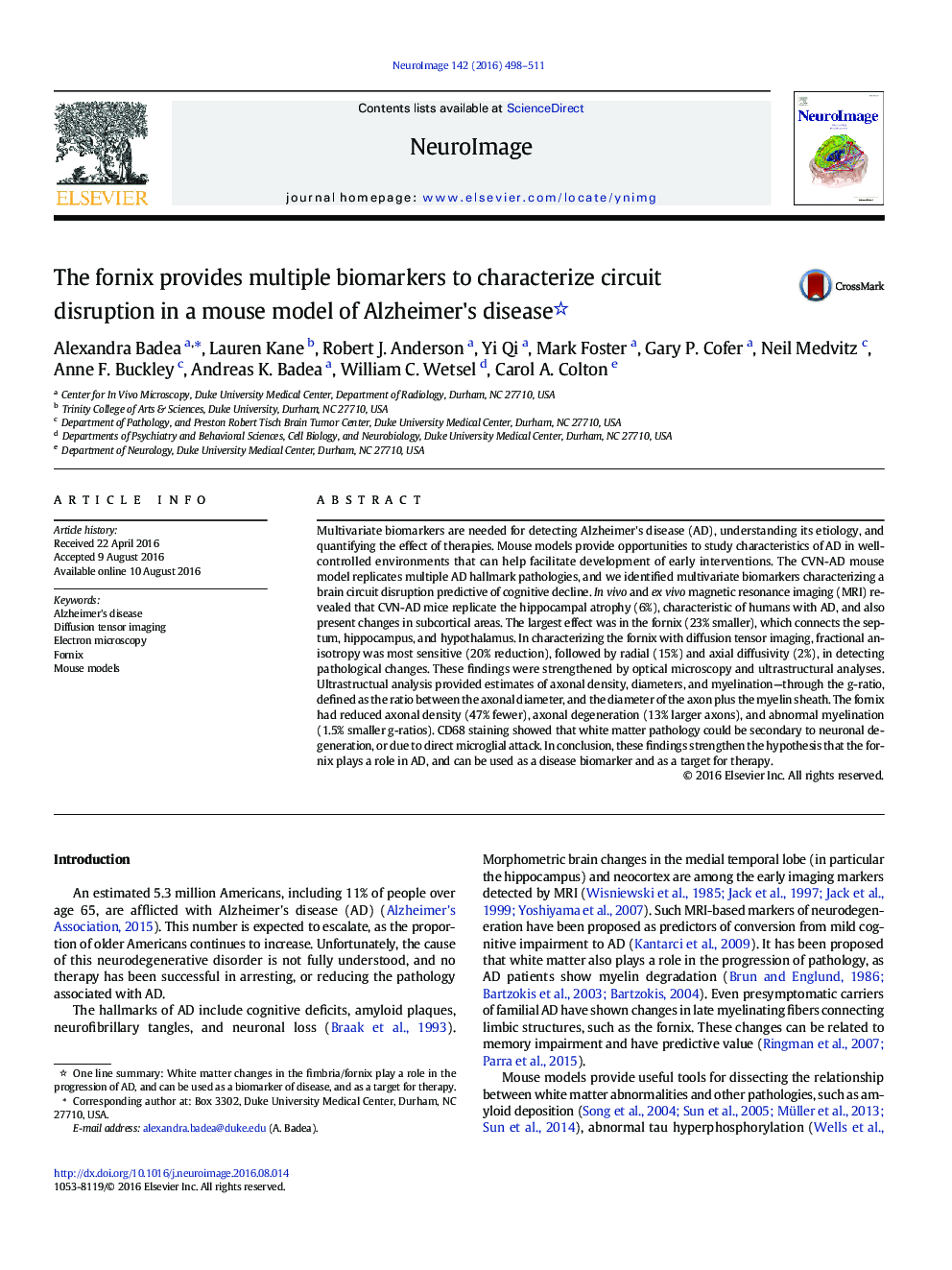| کد مقاله | کد نشریه | سال انتشار | مقاله انگلیسی | نسخه تمام متن |
|---|---|---|---|---|
| 5631455 | 1580866 | 2016 | 14 صفحه PDF | دانلود رایگان |

- We report white matter changes in the fimbria/fornix of the CVN-AD mouse model, supporting that white matter pathology plays a role in AD
- In vivo and ex vivo MRI revealed that CVN-AD mice present hippocampal atrophy (6%), characteristic of humans with AD, as well as in subcortical areas, and white matter tracts. The largest effect was in the fornix (23% smaller).
- In characterizing the fornix with diffusion tensor imaging, fractional anisotropy was most sensitive (20% reduction), followed by radial (15%), and axial diffusivity (2%) in detecting pathological changes.
- Optical microscopy and ultrastructural analyses confirmed white matter pathology in CVN-AD mice. The fornix had reduced axonal density (47% fewer), axonal degeneration (13% larger axons), and abnormal myelination (1.5% smaller G ratios).
- Our findings strengthen the hypothesis that the fornix plays a role in AD progression, and can be used both as a biomarker, and as a target for therapy.
Multivariate biomarkers are needed for detecting Alzheimer's disease (AD), understanding its etiology, and quantifying the effect of therapies. Mouse models provide opportunities to study characteristics of AD in well-controlled environments that can help facilitate development of early interventions. The CVN-AD mouse model replicates multiple AD hallmark pathologies, and we identified multivariate biomarkers characterizing a brain circuit disruption predictive of cognitive decline. In vivo and ex vivo magnetic resonance imaging (MRI) revealed that CVN-AD mice replicate the hippocampal atrophy (6%), characteristic of humans with AD, and also present changes in subcortical areas. The largest effect was in the fornix (23% smaller), which connects the septum, hippocampus, and hypothalamus. In characterizing the fornix with diffusion tensor imaging, fractional anisotropy was most sensitive (20% reduction), followed by radial (15%) and axial diffusivity (2%), in detecting pathological changes. These findings were strengthened by optical microscopy and ultrastructural analyses. Ultrastructual analysis provided estimates of axonal density, diameters, and myelination-through the g-ratio, defined as the ratio between the axonal diameter, and the diameter of the axon plus the myelin sheath. The fornix had reduced axonal density (47% fewer), axonal degeneration (13% larger axons), and abnormal myelination (1.5% smaller g-ratios). CD68 staining showed that white matter pathology could be secondary to neuronal degeneration, or due to direct microglial attack. In conclusion, these findings strengthen the hypothesis that the fornix plays a role in AD, and can be used as a disease biomarker and as a target for therapy.
586
Journal: NeuroImage - Volume 142, 15 November 2016, Pages 498-511